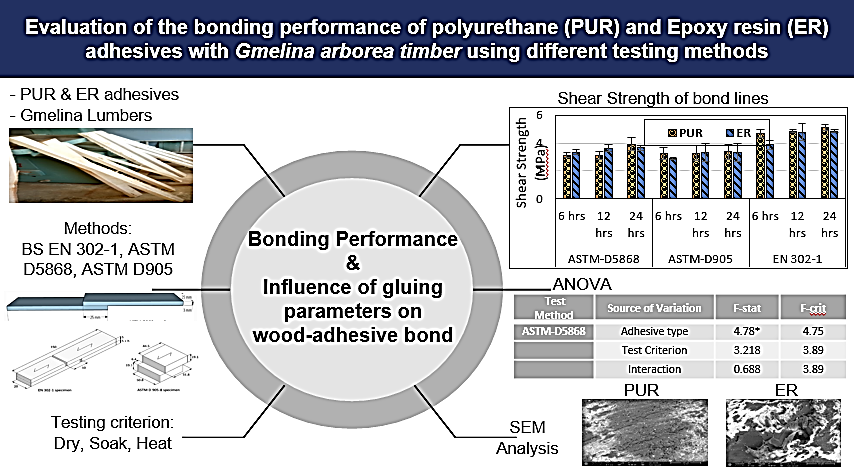Evaluation of the Bonding Performance of Polyurethane (PUR) and Epoxy Resin (ER) Adhesives with Gmelina Arborea Timber Using Different Testing Methods
Keywords:
Bond line, Adhesive penetration, Shear strength, Scanning electron microscopy, Analysis of varianceAbstract
This study investigates the bonding performance of Polyurethane (PUR) and Epoxy Resin (ER) adhesives using Gmelina arborea wood. The objectives are to determine the shear strength of PUR and ER adhesives using different testing methods (ASTM-D5868, ASTM-D905, and EN 302-1) and conditions (dry, soak, and heat), analyze the influence of gluing parameters on bond strength, and assess adhesive penetration at the wood-adhesive interface using Scanning Electron Microscopy (SEM). Results indicate that shear strength values ranged from 2.19 N/mm2 to 4.87 N/mm2 for ER adhesive and from 2.27 N/mm2 to 5.16 N/mm2 for PUR adhesive. For timber adhesives, industry standards provide guidelines for acceptable bonding performance. The values obtained (2.19 N/mm2 to 4.87 N/mm2 for ER, 2.27 N/mm2 to 5.16 N/mm2 for PUR) fall within a reasonable range for adhesives used in timber bonding. Notably, the PUR adhesive exhibited higher shear strength, with the EN 302-1 standard yielding higher strength values than the ASTM standards. Previous studies have shown that PUR adhesives typically exhibit good mechanical performance. Findings in this study are consistent with this trend, where the PUR adhesive achieved higher shear strength. SEM analysis revealed that PUR adhesive achieved a well-penetrated and uniform bond with the wood fibres, while ER adhesive showed a more heterogeneous bond with varying roughness. The heterogeneous bond observed in SEM analysis matches previous studies.


